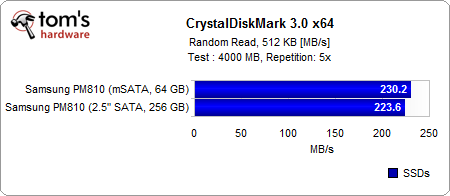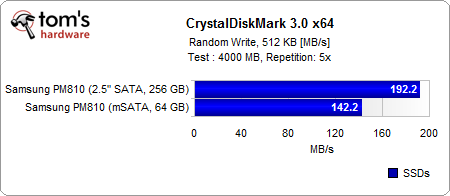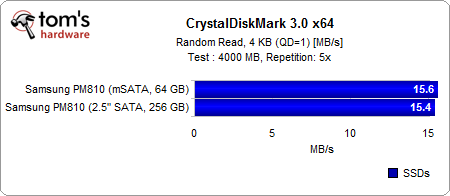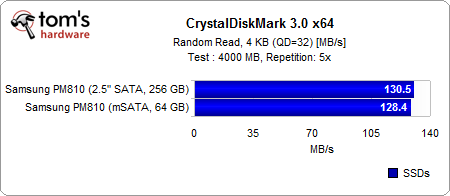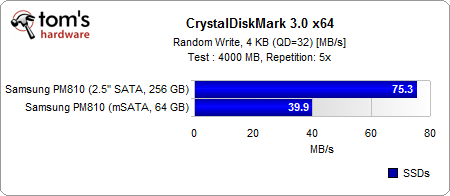Hands-On: A Second mSATA-Based SSD Emerges
When it comes to storage, the 3.5” and 2.5” form factors are most popular. But they're not always suitable for notebooks and netbooks. Samsung is the second vendor to introduce an mSATA-based SSD, after Intel demonstrated its SSD 310 earlier this year.
Benchmark Results: Random Reads/Writes
512 KB Random Reads/Writes
Random read throughput with 512 KB blocks is solid in both form factors.
Write performance is better on the eight-channel PM810 drive, as it has more available aggregate throughput compared to the four-channel mSATA drive.
4 KB Random Reads/Writes
Random read performance with 4 KB blocks is equally fast on the mSATA drive compared to the 2.5” model. However, performance isn’t very good at all here using a queue depth of one. It really takes a more concurrent load for the Samsung controller to hit its stride.
In that case, both drives deliver results that are eight times higher, as the controller maximizes throughput by better-utilizing all available flash memory channels.
Writes at a queue depth of one are immediately faster than reads because of the controller’s option to distribute write data across the flash channels. Increasing the queue depth has different impact on the two SSD types.
Get Tom's Hardware's best news and in-depth reviews, straight to your inbox.
The eight-channel PM810 in a 2.5" form factor can effectively increase throughput, while the four-channel mSATA drive drops performance. However, such a workload is not very common on desktop PCs. Anything between one and four, and sometimes up to eight pending commands is what we most often see on consumer systems.
Current page: Benchmark Results: Random Reads/Writes
Prev Page Benchmark Results: Sequential Read/Write Next Page Benchmark Results: PCMark Vantage